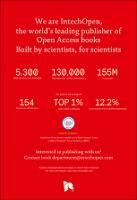Chapter Applying Heat for Joining Textile Materials
Author(s)
Vasiliadis, Savvas
Jevšnik, Simona
Kurson Bahadir, Senem
Stjepanovič, Zoran
Language
EnglishAbstract
The middle of the last century presents the beginning of a wide use of heat technologies for joining of the textile materials. Up to now, adhesive bonding/fusing of textile materials by application of heat and pressure during the determinate time has become a wide‐use technology for manufacturing numerous kinds of textile products, such as outdoor and sport garments, underwear, swimming suits, medical gowns, toys, and automotive seating fabrics. Fusing and welding technologies of textiles represent today a significant competition to traditional sewing, because the technological process is quick and energy efficient. The welding and fusing of textiles represent a great opportunity for providing a good performance as well as aesthetic appearance. New types of fusing/welding machines with high technological solutions regarding the functions, low energy consumptions, and environmental‐friendly effects are placed on the market. This chapter presents fusing, hot air and hot wedge welding techniques, suitable for joining of textile materials. The theoretical background and fundamental working principles of the equipment for each technology are presented in the first part of the chapter. Special attention is given to presentation of thermoplastic adhesives, textile substrates for fusible interlinings, and welding tapes. Next, the fusing/welding methods and their parameters are described, and the methods for quality evaluation of fused/welded panels are presented. The effect of fusing/welding parameters, selected methods depending on applied fabrics, fusible interlinings and welding tapes, and used fusing/welding machines are discussed separately. Factors effecting the quality of fused and hot air/wedge welded panels are supported with latest scientific findings. The advantages and disadvantages of the presented techniques are discussed together with the applications areas of each of the presented techniques. The new application opportunities are also highlighted at the end of the chapter.
Keywords
textile materials, fusing, hot air and wedge welding techniques, fusible interlinings, welding tapesDOI
10.5772/64309Publisher
InTechOpenPublisher website
https://www.intechopen.com/Publication date and place
2016Classification
Industry & industrial studies


 Download
Download